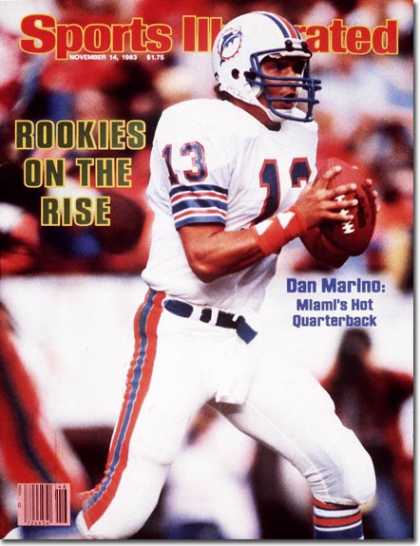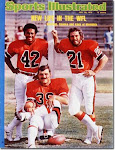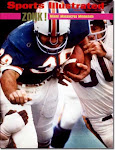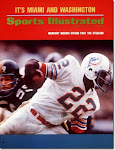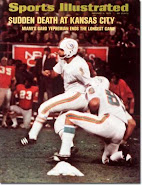A recent letter to a well-informed media friend, a transplant from Los Angeles, allowed South Beach Hoosier to connect some national and local dots he'd been pondering for awhile.__________________________________________
Have a couple of interesting articles for you to peruse, below.
As I'm sure you recall from your days when you were in LA,
Abbe Lowell's old pre-2003 firm, from which he defended
Gary Condit in the
Chandra Levy case -
Chandra belonged to my gym on Conn. Ave. in DC, right above M Street- was the LA-based,
Manatt firm.
Discovered recently that their founding name partner,
Charles Manatt, who's an ex-Chair of the DNC, was fired by the DNC -while he was toiling there as a Georgetown Law student- just days before
JFK beat
Nixon.
Imagine how psyched he was to be in charge, even during Reagan's first term!(Also didn't know until recently that Mr. Manatt took over as Chair of the Board of Trustees at GW -George Washington University- in 2001, just when their tuition got even more stratospeherically expensive than it already was, when my friends were going there for grad school, when it was absurd!)http://www.manatt.com/images/HR_ManattTribute.pdfI subscribe to a few of the
Manatt newsletters, including their one on advertising law, which usually has much more insight than the
Associated Press dispatch on the same story, days later,
http://www.manatt.com/newsletters.aspx?viewType=individual&folder=50I don't know if you already know this, but the firm is currently repping several retired NFL players -
including Hall of Famers- in their lawsuit against
Players Inc., the
NFLPA's licensing & marketing subsidiary. There's been scant coverage of this on
ESPN, and I'm sure that's
NOT entirely by accident.
When
Judicial Watch's founder and former director
Larry Klayman moved down to Florida in 2003 to make a run for the GOP nomination to grab
Bob Graham's Senate seat, the only place that I ever consistently saw his campaign signs were on the eastern side of the intersection of A1A and Hallandale Beach Blvd., part of my current stomping grounds, on the fence of the
Victor Posner property, just north of the iconic Hallandale Beach Water Tower, just south of where the Haitian boat came ashore three weeks ago.
(For posterity and curiosity's sake, I considered taking some of them when they were still up months after he was trounced in the GOP primary. But I waited ONE day too long. They just vanished one night.)The
Posner property, just south of the
SIAN project, has had a 30-40 foot mound of dirt sitting there since at least Thanksgiving,
without a mandated (plastic) silt fence to prevent it from blowing out onto motorists and pedestrians on A1A.
It's a perfect example of a simple South Florida quality-of-life issue which this area never seems able to get a proper handle on, as the City of Hollywood and Broward County go round and round over who's responsible for enforcing a self-evident pollution problem that couldn't possibly be more of a thumb in the eye to local area residents.
At least five months since it showed up, it just sits there, mocking everyone who passes it.
Sort of like how I followed up on a
LONGSTANDING complaint Saturday night the 14th, from a friend who lives on A1A, who shares my frustration at the continuing inability of local, county and state govts. to coordinate even the simplest task.
(Though I really loved living in Arlington County for all those years, I never realized how great Arlington County's govt. was -until I left!The contrast with the attitudes here towards problem-solving could hardly be more stark.)And what did I discover on my latest round of sleuthing and detection, you ask, having already filled up notebooks with postings on
Aventura,
Hollywood and
Hallandale Beach misdeeds and screw-ups that defy both common sense and imagination, which'll soon be on my two blogs?
EVERY single street light on both sides of A1A was out Saturday night, once you head north out of tony Golden Beach, until you come to the north side of HBB, where the City of Hollywood starts -along with the first five lights on the West 858 access ramp that takes you over the Intercoastal and towards US-1 and 1-95. That's consistency!Yes, it's another tribute to the backwater city I live in,
Hallandale Beach, and its incompetent and myopic mayor,
Joy Cooper, and her apathetic employees and contractors:
39 street lights in a row out on one of South Florida's most prominent streets.A street chock-full of upper-middle class folks -
many of whom are elderly- who no doubt thought that their taxes were already supposed to be taking care of this sort of thing.
In walking block after block along the sidewalk,
in near pitch-black conditions, encountering people still going about their life, regardless of the circumstances their own city govt, had put them in, it dawned on me that
for a criminal, it's the ultimate target-rich environment, whether your interest is robbery or carjacking.
Nobody sees anything.
Yet as you may've read or heard, the state
FDOT is considering labeling the A1A stretch of Broward from Deerfield Beach to Hallandale Beach a "scenic highway"
http://www.dot.state.fl.us/emo/ScenicHWY/pdf/Miami%20Herald%2004%2003%202006.pdfForgetting for a moment that you can't honestly even see the beach in
Hallandale Beach from A1A for all the huge towers lining the street, as is true for far too many stretches of
Hollywood, how do you call a place "scenic" if you can't even see five feet in front of you at night?
Imagine having to evacuate that area at night before a hurricane?
Well I
DID, after I saw Hurricane evacuation signs obscured by FDOT poles and signs that rendered them invisible.
Those older residents I spoke of earlier have special transportation needs, and when you see the basics, like evacuation signs, being poorly placed,
it makes you wonder what else is not being done correctly, six weeks before Hurricanes season starts.Yes, accountability is a completely foreign concept here in South Florida as I'm sure you've long since learned since moving here from SoCal.
I only wish I'd have started my two blogs when I first came down here in the Fall of 2003.
Mieux tard que jamais -better late than never!I don't recall off the top of my head whether
Dana Priest' and
Anne Hull of
The Washington Post and their
Walter Reed Hospital story about insufficient care of outpatients just missed the deadline for
Pulitzer consideration, but considering how much everyone in DC's media village fell all over themselves in praising them, and the fact that the
Local Reporting prize went to
The Miami Herald's Debbie Cenziper for her
"House of Lies" series on public housing in
Miami-Dade County, ask yourself the following question:
Does the idea of reporters and newspapers earning plaudits for writing about massive longstanding problems that were ignored by them and their colleagues for years seem as upside to you as it does to me?They didn't discover the problem, they simply pointed out that it existed."Hey Columbus, I'm over here!"Leaving aside for a moment the fact that
Cenziper, a
U-F grad, is leaving the
Herald for the
Post soon.. Oh, you
didn't know that having won a Pulitzer, a Miami Herald reporter is jumping ship? Well, here's the story as E& P wrote it the other day:
Editor & Publisher
'Miami Herald' Pulitzer Winner Jumping to 'Washington Post'By Joe StruppPublished: April 18, 2007 11:00 AM ET
Debbie Cenziper of The Miami Herald won a Pulitzer Prize for an in-depth report on local housing abuse, she's found a new job at The Washington Post. In his Pulitzer wrapup on Tuesday, Post media writer Howard Kurtz casually mentioned that she would be joining the paper this summer.The Broward (Fla.) New Times reported today that Cenziper had gotten the job months ago, but agreed to stay at the Herald until the end of this spring. She won the Pulitzer for Local Reporting on Monday."The news that Cenziper was leaving wasn't played quite as prominently today," New Times wrote of the Herald's own coverage of the change. "Gossip columnist Joan Fleischman tacked it on the end of her piece this morning. That's right, the Herald reported the departure of its star reporter in a gossip column based on the reporting of another newspaper."Joe Strupp (
http://www.editorandpublisher.com/eandp/news/mailto:jstrupp@editorandpublisher.com) is a senior editor at E&P.
Links referenced within this article
jstrupp@editorandpublisher.comhttp://www.editorandpublisher.com/eandp/news/mailto:jstrupp@editorandpublisher.comSo with all that in mind, now, it just seems to me that a sense of corporate shame by the Herald and the Post's mgmt., for having had collective blinders on for years about what, in retrospect, seems an obvious scandal in their own backyard, might be more appropriate.
Yes, sometimes even an optimist like me has to be contrarian when the facts are so patently clear.
Adios 'til next time!
____________________________________________
Copyright 2007 ALM Properties, Inc. All rights reserved.
Chadbourne's Abbe Lowell Jumps to McDermott WillAndrew Longstreth
The American LawyerApril 17, 2007
Abbe Lowell, a highly regarded Washington, D.C., defense lawyer, is on the move again.
After spending four years at Chadbourne & Parke, Lowell said Monday that he is hopping to McDermott Will & Emery where he will head the firm's white-collar criminal defense practice in Washington, D.C. The move will be effective April 28.
Although he called Chadbourne a "fabulous" firm, Lowell said he was not able to generate the kind of litigation opportunities he wanted.
"It's a combination of size and practice areas," said Lowell.
McDermott has some 1,000 lawyers in 14 offices around the world. By contrast, Chadbourne had around 350 lawyers in 11 offices. Last year McDermott's profits per partner were $1.41 million, while Chadbourne's were $1.08 million.
By picking up Lowell, 54, McDermott gets a lawyer with a keen understanding of the ways of Washington. Lowell served as chief investigative counsel to Democrats in the U.S. House of Representatives during the impeachment proceedings of President Bill Clinton.
Throughout his career, he has also represented a raft of politicians under scrutiny, mostly Democrats, including Rep. Gary Condit during the Chandra Levy scandal.
But he has occasionally crossed party lines. Perhaps his best-known client is the disgraced former Republican lobbyist Jack Abramoff, who pled guilty to charges of conspiracy, fraud and tax evasion last year.
He currently represents Republican Nevada Gov. Jim Gibbons, who is under federal investigation regarding his relationship with a defense contractor.
Unlike many white-collar defense attorneys at big firms, Lowell also has major trial experience. Many of his clients have tended to be individuals who have chosen to fight the government in court. In 2005, for example, Lowell represented multimillionaire Mississippi plaintiffs lawyer Paul Minor at trial against criminal charges of bribery and conspiracy. The jury acquitted him on some charges and hung on the rest. (Without Lowell as his trial counsel, Minor was convicted earlier this year at a retrial.)
McDermott will be Lowell's third firm in four years. Before joining Chadbourne in 2003, Lowell was the D.C. managing partner of Manatt, Phelps & Phillips, where he headed the white-collar and special investigations group for four years.
Before that, Lowell served as a name partner at Brand, Lowell & Ryan, which he cofounded in 1983. Ever since leaving his firm, Lowell said his mission has been to find a firm where he could create more interesting work for himself than he could on his own.
"I think I have it right this time," said Lowell. "Sometimes it takes time to get it right."
Chadbourne counsel Pamela Marple, a former federal prosecutor, will also join from Chadbourne as a partner.
According to McDermott Chairman Harvey Freishat, McDermott has taken on five lateral partners in 2007 and lost one.
________________________________________________________
Hollywood Entrepreneur Accuses Judicial Watch of MisconductEmma Schwartz
Legal Times04-17-2007
They've gone after the Clintons, Dick Cheney and even Tom DeLay, all in the pursuit of good government. But now the leaders of Judicial Watch are facing their own set of ethical questions from a former client who helped the conservative watchdog group make headlines.
The allegations are outlined in a lawsuit filed in D.C. federal court by one-time Hollywood entrepreneur (and four-time felon) Peter F. Paul, who claims that Judicial Watch violated its ethical obligations during its representation of him and then misled donors about its work.
"Everything they have accused the Clintons of, they are themselves guilty of in spades," Paul says.
The dispute stems from an unusual agreement between Judicial Watch and Paul. In 2001, the organization agreed to represent Paul in his public battle against the 2000 Senate campaign of Hillary Clinton, while at the same time defending him from a series of criminal securities-fraud charges.
The 58-year-old Paul, who spent nearly three years in prisons in Brazil and New York, alleges that Judicial Watch's dual role created an inherent conflict that hurt his criminal defense and prolonged his detention. He also says the group used his fight against the Clintons for fund-raising, even after it dropped out of his case.
Last week, Paul filed a complaint with D.C. Bar Counsel against Judicial Watch lawyer Paul Orfanedes, contending that he allowed Judicial Watch President Tom Fitton, who is not a lawyer, to interfere in the legal strategy of his case. Paul is seeking more than $1 million in damages and fees.
Richard Driscoll, who represents Judicial Watch, says Paul's allegations have no merit but would not elaborate. In a March 16 motion to dismiss, Driscoll wrote, "Factually, Paul's hyperbolic allegations fail to disclose much of what actually occurred." Judge Royce Lamberth hasn't ruled on the motion.
The story of how Judicial Watch's relationship with Paul fell apart highlights the complex alliances and practices behind the group's politically charged litigation.
Paul was once a cause célèbre for Judicial Watch. His claims eventually led the Federal Election Commission to levy a $35,000 fine against Hillary Clinton's 2000 Senate campaign. They also served as the basis of a failed criminal prosecution of Clinton's campaign treasurer, David Rosen.
Paul was not the first client Judicial Watch had aided in criminal cases. The group also represented Democratic donor Johnny Chung, a California businessman who pleaded guilty to campaign finance violations in connection with President Bill Clinton's 1996 re-election campaign. Judicial Watch assisted Chung in filing Freedom of Information Act lawsuits while at the same time advising in his criminal case.
Paul's suit against Judicial Watch, filed in February in the U.S. District Court for the District of Columbia, is just the latest challenge the group is facing. It is also defending a civil action filed by Larry Klayman, its founder and former director. Klayman claims that the organization defamed him and failed to uphold his severance agreement when he left in 2003 to run for a Florida Senate seat. Earlier this month, Judge Colleen Kollar-Kotelly ruled that most of Klayman's claims can go forward.
In January, Louise Benson, a former Judicial Watch donor, also sued in a Florida state court over money she gave for a new building that the organization never built.
Klayman says the lawsuits are fighting "a pattern and practice by Tom Fitton and other directors to mislead donors."
Both Klayman and Paul are using the same lawyer, Daniel Dugan of Spector Gadon & Rosen, but maintain that they are not coordinating their litigation.
Fitton declined to discuss the cases, but he calls them a "nuisance." He says: "It's unfortunate that we have to be distracted in some part as a result of these lawsuits."
THE CLINTONS AND SPIDEY, 'NUFF SAID
The story of Paul, the Clintons and Judicial Watch began in August 2000 at a Hollywood fund-raiser for Hillary Clinton's Senate bid.
At the time, Paul was a co-owner of a successful Internet venture that he began with Spider-Man creator Stan Lee. The company -- called Stan Lee Media -- aimed to popularize superheroes on the Internet, as Lee had once done with Spider-Man, the Incredible Hulk and other Marvel comic-book heroes. Paul was looking for big names to join the board. Someone like soon-to-be-ex-President Clinton seemed a perfect prospect.
To grease the wheels, Paul says he underwrote more than $1 million for Hillary Clinton's fund-raising gala in Los Angeles, where he rubbed shoulders with the former president.
But Paul's support did little to get Clinton on board with the venture. Paul says he felt betrayed and adds that he soon learned that the campaign had not reported his donation to the FEC. He thought he smelled a fraud.
Paul, of course, was no stranger to fraudulent schemes.
He first made a name for himself as an attorney and civic leader in Miami. But in 1979, he was convicted on one count of conspiracy to commit wire fraud and one count of cocaine possession. Paul says the charges stemmed from a sting operation he was involved in against Cuban President Fidel Castro.
After spending 30 months behind bars, Paul headed to California, where his staunch anti-Castro views quickly won him favor with then-President Ronald Reagan. Paul won an appointment to the committee organizing the bicentennial commemoration of the Constitution, where he says he worked closely with then-Chief Justice Warren Burger. While still on parole, however, Paul lied about his identity to a customs official on his way to Canada. He was charged and pleaded guilty to another felony.
Despite that setback, throughout the '80s and '90s, Paul made his mark in Hollywood, both professionally and financially. He marketed biographies for Muhammad Ali and Tony Curtis and developed the media image for the model Fabio.
Paul knew his decision to take on the Clintons would be difficult. In fact, few lawyers were willing to do so.
BATTLING IT OUT IN BRAZIL
In 2000, Judicial Watch was at something of a crossroads. The 30-person group was only five years old, but it had quickly made a name for itself by attacking the Clinton White House.
With Klayman's fiery attitude and aggressive litigation tactics, Judicial Watch had won the right to depose a number of key figures, including Democratic fund-raiser John Huang, Pentagon spokesman Ken Bacon and Nolanda Hill, a former business partner of the late Commerce Secretary Ronald Brown. And the organization's FOIA litigation sometimes won sanctions against government agencies.
Although many of its suits were ultimately dismissed, Judicial Watch used its notoriety -- and limited successes -- to raise money. In 1998, billionaire Richard Mellon Scaife -- owner of the Pittsburgh Tribune-Review -- gave the group $550,000.
With a Republican administration in office, Judicial Watch had less fodder to motivate its mostly conservative donors. So when Paul approached the group with allegations that again would allow it to target the Clintons, Klayman was easily won over.
But Paul had other legal matters he needed help with. The dot-com bust had sent Stan Lee Media belly-up, and the Justice Department was investigating Paul's role in alleged stock manipulations with the company. The bankruptcy of his company had also wiped out most of Paul's savings. Judicial Watch agreed to foot Paul's legal bill and organize his criminal defense.
Paul's claims made a big splash when Judicial Watch filed two lawsuits in the summer of 2001 against the Clintons, one in a California court and the other with the FEC. But as Paul's political attack generated attention, his criminal case heated up.
In July 2001, he was indicted for securities fraud in the Eastern District of New York. The Securities and Exchange Commission also filed civil charges in California.
A few months earlier, Paul had gone to Brazil, where he had long run a business selling software that teaches English. The feds saw the move as an attempt to evade indictment. So they had Paul arrested in Sao Paulo in August and taken to a local prison.
Judicial Watch retained criminal-defense attorney Michael Dowd. Dowd is a well-known New York lawyer who had once been suspended from practicing law for his involvement in a kickback scheme in the 1980s. But he later made a name for himself by representing battered women and people abused by clergy.
Paul was not an easy client, Dowd says, but he doesn't recall anything amiss about Paul's relationship with Judicial Watch. "It seemed that they were genuinely interested in him," he says.
At first, Paul and his lawyers tried to negotiate some sort of immunity: Paul would dish about his company and the Clintons in exchange for an end to the criminal charges.
Discussions eventually broke down and Paul began fighting extradition -- a battle that lasted until September 2003, when he was finally brought back to America and held at a Brooklyn jail.
During Paul's first hearing in New York, he fired Dowd on the spot. According to the ethics complaint Paul filed against Judicial Watch's Orfanedes, Dowd told the court that he was not familiar with the 2001 indictment. (Dowd declined to comment on his departure.)
Paul then approached James Neville, a local criminal-defense lawyer sitting in the courtroom that day. "I grabbed him, and I said, 'How would you like to represent me?'" Paul says.
The hire didn't sit well with Judicial Watch, so Fitton, who by this point had taken over for Klayman, brought in another lawyer, Robert Sticht from Beverly Hills.
Sticht and Neville immediately fought over strategy. Paul wanted to file a habeas corpus petition challenging the extradition process in Brazil. Sticht disagreed. Neville thought the petition was a long shot but says "it certainly was a rational tactic to take." (Sticht could not be reached for comment.)
Neville felt that Judicial Watch's opposition to the filing conflicted with his obligation to zealously represent his client. He also felt the group was short-shrifting him on payment. (He eventually got $40,000, he says.)
Fitton responded by firing him. He then hired two new lawyers, Boris Orlov from Sticht's firm and Scott Black from Kostelanetz & Fink.
But the relationship between Paul and Judicial Watch was already wearing thin. Paul complained that his Judicial Watch-paid attorneys were unwilling to visit him in jail. What's more, he felt that Fitton was giving Orfanedes and Sticht legal advice, even though he is not a lawyer.
Even an outsider could sense problems. "The evidence in the case was really overwhelming," says Steve Zissou, who represented a co-defendant in the case. "You really have to say to the client, 'You have to get out of the case, you're a dead duck.'"
Instead, Paul claims that his new defense team "proceeded to file numerous motions designed to anger the court, but with little hope of success."
One of these motions brought both sides to a head during an August 2004 hearing before Judge Leonard Wexler. Prosecutors claimed in a sealed filing that Judicial Watch had created a conflict of interest by filing the motion to dismiss the indictment for outrageous government conduct, which they believed could only be proven if Paul admitted to potentially criminal behavior.
Wexler was concerned, as well. "Let me ask you one question," he told Sticht, according to the transcript. "Who is paying you? You keep flying in. You keep making all this paperwork."
Sticht did not see a problem, but Wexler offered to appoint an outside counsel for Paul to consult with. Paul, however, refused, and wound up retaining Joseph Conway, a recently departed prosecutor from the U.S. Attorney's Office in Long Island, N.Y.
Within days, Conway had essentially reversed Judicial Watch's legal strategy. He dismissed the three appeals on Paul's bail and withdrew the motion over the government's conduct, indicating that Paul would plead guilty in the New York case as well as to the SEC charges in California.
Left without many options, Sticht asked Wexler to let him withdraw from the representation -- but not before making accusations of his own. In a November 2004 court filing, Sticht accused Conway of a conflict of interest because he had just left the U.S. Attorney's Office that was prosecuting Paul. (Conway said at the time that he'd never been involved with the case.)
In January 2005, Paul pleaded guilty to one count of securities fraud and was released on bail. In plea documents, Paul states that he takes medicine for a bipolar disorder. Two years later, he has yet to be sentenced and is currently living with his family in Asheville, N.C.
But there was still the problem of Judicial Watch's pledge to cover Paul's legal bills. In 2005, Fitton tried to get Paul to waive that commitment in exchange for $75,000. Paul declined and grew increasingly incensed that Judicial Watch continued to trumpet him in its fund-raising -- as it did when the FEC fined the Clinton campaign that December.
Fitton is not concerned that the attacks will hurt Judicial Watch's bottom line. He says the group has branched out to new issues, such as immigration. Of course, it hasn't forgotten about the Clintons. The group recently released a "poll" focused on Hillary Clinton's bid for the White House. The results: 45 percent of voters were concerned her administration would be corrupt.
(My emphasis!)____________________________________________________________
http://www.manatt.com/newsevents.aspx?id=4480&folder=22Manatt And McKool Smith Help Retired Professional Football Players Kick Off Class-Action LawsuitOnly 10 percent of those represented by Union's commercial licensing arm receive paymentsLOS ANGELES and PALO ALTO, CALIF., February 15, 2007 - A betrayal of trust of former All-Pro defensive back Bernard P. Parrish, Hall of Fame defensive back Herbert A. Adderley and more than 3,000 other retired football players is at the center of a class-action lawsuit filed by Manatt, Phelps and Phillips and McKool Smith late yesterday in federal court in San Francisco against Players Inc., the licensing and marketing subsidiary of the National Football League Players Association, the players' union. The retired players claim that they are owed tens of millions of dollars for licensing and other payments not made since 1994.
The lawsuit alleges breach of fiduciary duty by Players Inc. and claims that the retired athletes were not paid royalty and other payments from licensing and marketing opportunities using their names and images. The lawsuit states that an accounting of Players Inc.'s $750,000,000 secretive licensing business will disclose that the retired players, 90 percent of whom have received no payments, have been cheated since the day Players Inc. was formed.
"Players, Inc. has completely failed to comply with the duty of trust that it owes as the agent of these players," said Ronald S. Katz, the lead counsel for the retired players, who is a partner at Manatt. "These players built the game before the era of big salaries. Because the pensions they receive from the Union are not enough to live on and because many of these players are disabled, they need these royalty payments just to make ends meet. Given the Players, Inc. and NFLPA documents attached to the complaint, I would not be surprised to see a congressional investigation of the Union."
Co-counsel Lewis LeClair, a partner of the McKool Smith law firm in Dallas, Texas, added, "If you purport to represent all of the players but only pay a fraction of them, that is neither fair nor legal, Players Inc. has a duty to act in the best interest of all those they represent, not to ignore the vast majority of them."
Founded in 1994, Players Inc. is responsible for marketing active and retired players through licensed products such as trading cards and video games. According to the lawsuit, the organization actively solicited retired players with promises of great benefits. The retired players claim that although Players Inc. has developed a business worth hundreds of millions of dollars by claiming to represent such a large group, 90 percent of the retired players have not shared in this benefit; because Players Inc. has refused to give the retired players useful information on its finances, they have not been able to protect themselves against the organization that was supposedly acting in their interests.
Parrish, who has been an advocate for retired players for 40 years, noted that in 2006 the U.S. Department of Labor increased the amount of information that the Players' Union had to report.
"Shortly after the players' union made that report," said Parrish. "I noted that the top four officers of Players Inc. announced their resignations. That's when I called a lawyer."
"I could not get Players Inc. to answer my phone calls," said Adderley. "I do not call that adequate representation for the hard work that I put into my football career."
"The retired players need representation on issues like this," noted Parrish. "That gap will now be filled by a new organization that will be born out of this lawsuit, Retired Professional Football Players for Justice. We will be making an announcement about that shortly."
Parrish is a former defensive back who starred with the Cleveland Browns from 1959 through 1966. He led the defense of that team to a world championship in 1964. Adderley is a former cornerback who played for the Green Bay Packers and the Dallas Cowboys from 1961 through 1972. He played in four of the first six Super Bowl games and is one of two players in professional football to play on six world championship teams.
About Manatt, Phelps & Phillips, LLPManatt, Phelps & Phillips, LLP, provides legal and consulting services to a global client base from offices in Los Angeles, Orange County, Palo Alto and Sacramento, California; New York City and Albany, New York; and Washington, D.C. Manatt includes Manatt Health Solutions, a healthcare policy and strategic business advisory group, and ManattJones Global Strategies, LLC, a wholly owned subsidiary that develops and implements strategies to expand client businesses and facilitate their effective competition in global markets.
For more information, visit
http://www.manatt.com/,
http://www.manattjones.com/, and
http://www.manatthealthsolutions.com/.
 Fort Lauderdale International Film Festival promo card from 2004
Fort Lauderdale International Film Festival promo card from 2004

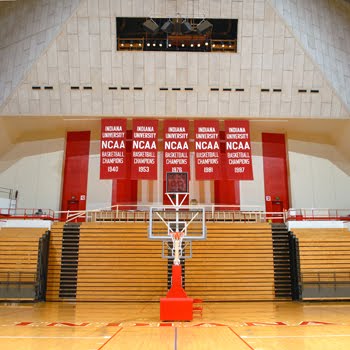


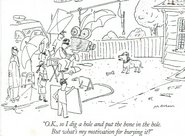

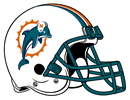



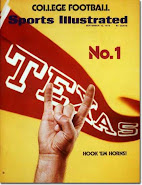
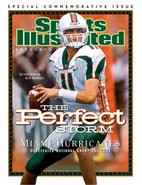
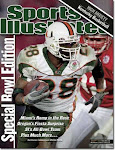
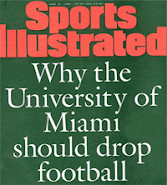
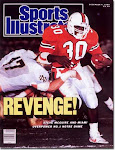
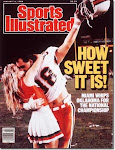
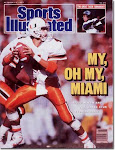

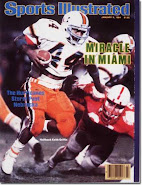
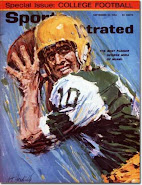
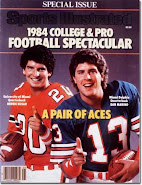

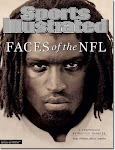
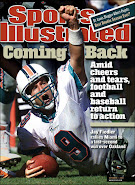
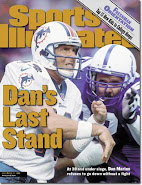

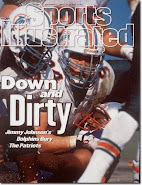

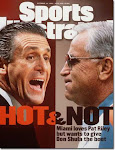
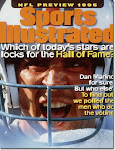
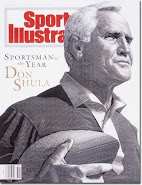
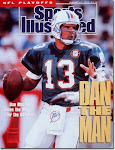
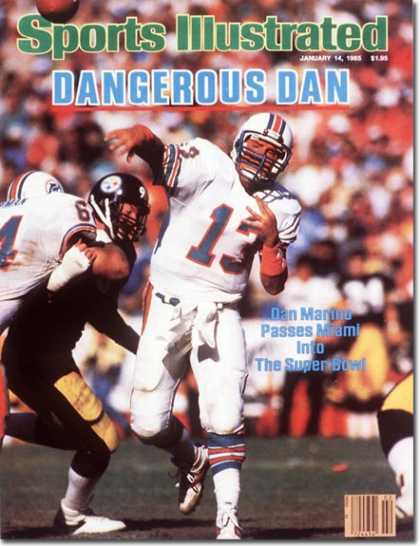

+Sep+10,+1984.jpg)
